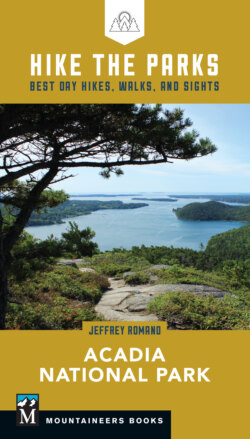Читать книгу Hike the Parks: Acadia National Park - Jeff Romano - Страница 18
FORESTS ON THE EDGE
ОглавлениеMuch like the rest of Maine, most of Acadia is forested. Which trees grow where depends on many factors, including elevation, slope direction, fire history, and soil qualities. The park also sits on the boundary between two major ecoregions: the southern edge of the boreal forest that extends into Canada and the northern edge of the eastern deciduous forest that stretches south toward the mid-Atlantic.
Boreal Forests. Large portions of the park are home to red spruce, white spruce, and balsam fir. These boreal species are prevalent along the shoreline, across Isle au Haut, throughout the Schoodic Peninsula, and on the higher elevations of Mount Desert Island where soils are thin. Northern white cedar, a less widespread boreal species, lines the shores of many of the park’s ponds and lakes. While dominated by evergreens, the park’s boreal forests are also home to a scattering of hardwood trees.
Eastern Deciduous. Eastern deciduous trees thrive in lower elevations away from the ocean, along south-facing slopes where soils are healthier, and in areas impacted by fire. Common species include eastern beech, white and yellow birch, red and sugar maple, white ash, and red oak. These are the trees whose leaves change, creating a palette of colors across the landscape before falling to the ground each autumn. In some locations, these deciduous trees grow in mixed stands with white pines, the region’s tallest conifer.
Isolated Forests. Acadia also features a handful of smaller forest communities, including pitch pine, scrub oak, and jack pine woodlands. These forests generally grow on ledgecovered, higher-elevation terrain with thin soils and persistent winds. Many of the pitch and jack pines thrive on summits and ridges that were significantly impacted by the infamous 1947 fire (see “Fires of 1947” sidebar). Look for stands of eastern hemlock growing along streambeds at lower elevations in the mountains.
